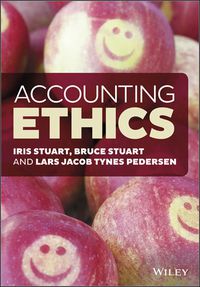Real Cool produces air conditioners in two departments: Assembly and Finishing. Budgeted information follows. Department Budgeted Cost Allocation Base Budgeted Usage Assembly $ 456,000 Machine hours 7,600 machine hours Finishing 28,000 Direct labor hours 4,000 direct labor hours Additional production information for two models of its air conditioners follows. Per unit Selling price Direct materials Direct labor Model A $ 580 180 230 Model 1 $ 600 170 240 Model 300 2 MH J DLH Model T 400 3.5 MH 4 DLH Units produced Assembly machine hours per unit Pinishing direct labor hours per unit 1a. Compute departmental overhead rates and determine overhead cost per unit for each model. 1b. Use machine hours to allocate budgeted Assembly costs and use direct labor hours to allocate budgeted Finishing costs 2. Compute the total product cost per unit for each model. 3. For each model, compute the gross profit per unit (selling price per unit minus product cost per unit), Complete this question by entering your answers in the tabs below. Rea 1A Reg 1B Reg 2 Red 3 Units produced Assembly machine hours per unit Finishing direct labor hours per unit Model A 300 2 MH 3 DLH Model T 400 3.5 MH 4 DLH 1a. Compute departmental overhead rates and determine overhead cost per unit for each model. 16. Use machine hours to allocate budgeted Assembly costs and use direct labor hours to allocate budgeted Finishing costs. 2. Compute the total product cost per unit for each model. 3. For each model, compute the gross profit per unit (selling price per unit minus product cost per unit). Complete this question by entering your answers in the tabs below. Req 1A Reg 1B Reg 2 Reg 3 Compute departmental overhead rates and determine overhead cost per unit for each model. Assembly department overhead rate per MH Finishing department overhead rate per DLH RA Reg 10 > Model A 300 2 MH 3 DLH Model T 400 3.5 MB 4 DLH Units produced Assembly machine hours per unit Finishing direct labor hours per unit 1a. Compute departmental overhead rates and determine overhead cost per unit for each model. 16. Use machine hours to allocate budgeted Assembly costs and use direct labor hours to allocate budgeted Finishing costs 2. Compute the total product cost per unit for each model. 3. For each model, compute the gross profit per unit (selling price per unit minus product cost per unit). Complete this question by entering your answers in the tabs below. Reg 1A Req 18 Reg 2 Req3 Use machine hours to allocate budgeted Assembly costs and use direct labor hours to allocate budgeted Finishing costs. (Round "Hours per unit" to one decimal place.) Model A Model T Department Departmental Overhead Rate Overhead Overhead Hours per Unit Allocated Hours per Unit Allocated Assembly Finishing Totals $ 0 $ 0 Model A 300 2 MH 3 DLH Model T 400 3.5 MH 4 DLH Units produced Assembly machine hours per unit Finishing direct labor hours per unit Ma. Compute departmental overhead rates and determine overhead cost per unit for each model. b. Use machine hours to allocate budgeted Assembly costs and use direct labor hours to allocate budgeted Finishing costs 2. Compute the total product cost per unit for each model. 3. For each model, compute the gross profit per unit (selling price per unit minus product cost per unit) Complete this question by entering your answers in the tabs below. Reg 1A Reg 1B Reg 2 Reg 3 Compute the total product cost per unit for each model. Product Cost Per Unit Direct Materials Direct Labor Overhead per Unit Model A Model T Model T 400 3.5 MH 4 DLH Model A Units produced 300 Assembly machine hours per unit 2 MH Finishing direct labor hours per unit 3 DLH 1a. Compute departmental overhead rates and determine overhead cost per unit for each model. 1b. Use machine hours to allocate budgeted Assembly costs and use direct labor hours to allocate budgeted Finishing costs. 2. Compute the total product cost per unit for each model. 3. For each model compute the gross profit per unit (selling price per unit minus product cost per unit). Complete this question by entering your answers in the tabs below. Reg 1A Reg 1B Reg 2 Req3 For each model compute the gross profit per unit (selling price per unit minus product cost per unit). (A negative gross pront should be indicated with a minus sign.) Per Unit Selling Prico Product Cost Gross Profit Model A Model T Req2 Rega











